
How to Use TDS Sensor Board : Examples, Pinouts, and Specs
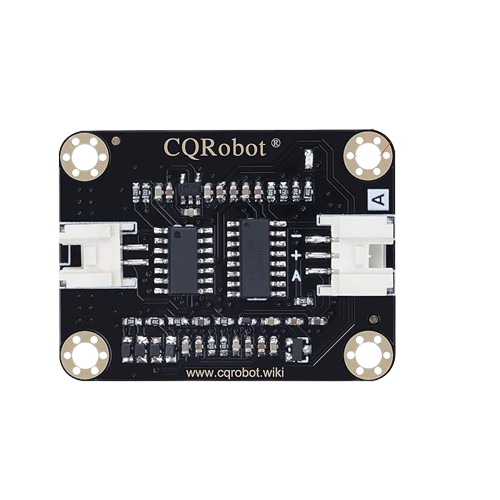
 Design with TDS Sensor Board in Cirkit Designer
Design with TDS Sensor Board in Cirkit DesignerIntroduction
The TDS Sensor Board by SQRobot is an electronic device designed to measure the Total Dissolved Solids (TDS) in a liquid, providing an indication of the purity or the concentration of dissolved ions in water. This sensor is widely used in applications such as water quality testing, hydroponics, aquariums, and environmental monitoring.
Explore Projects Built with TDS Sensor Board
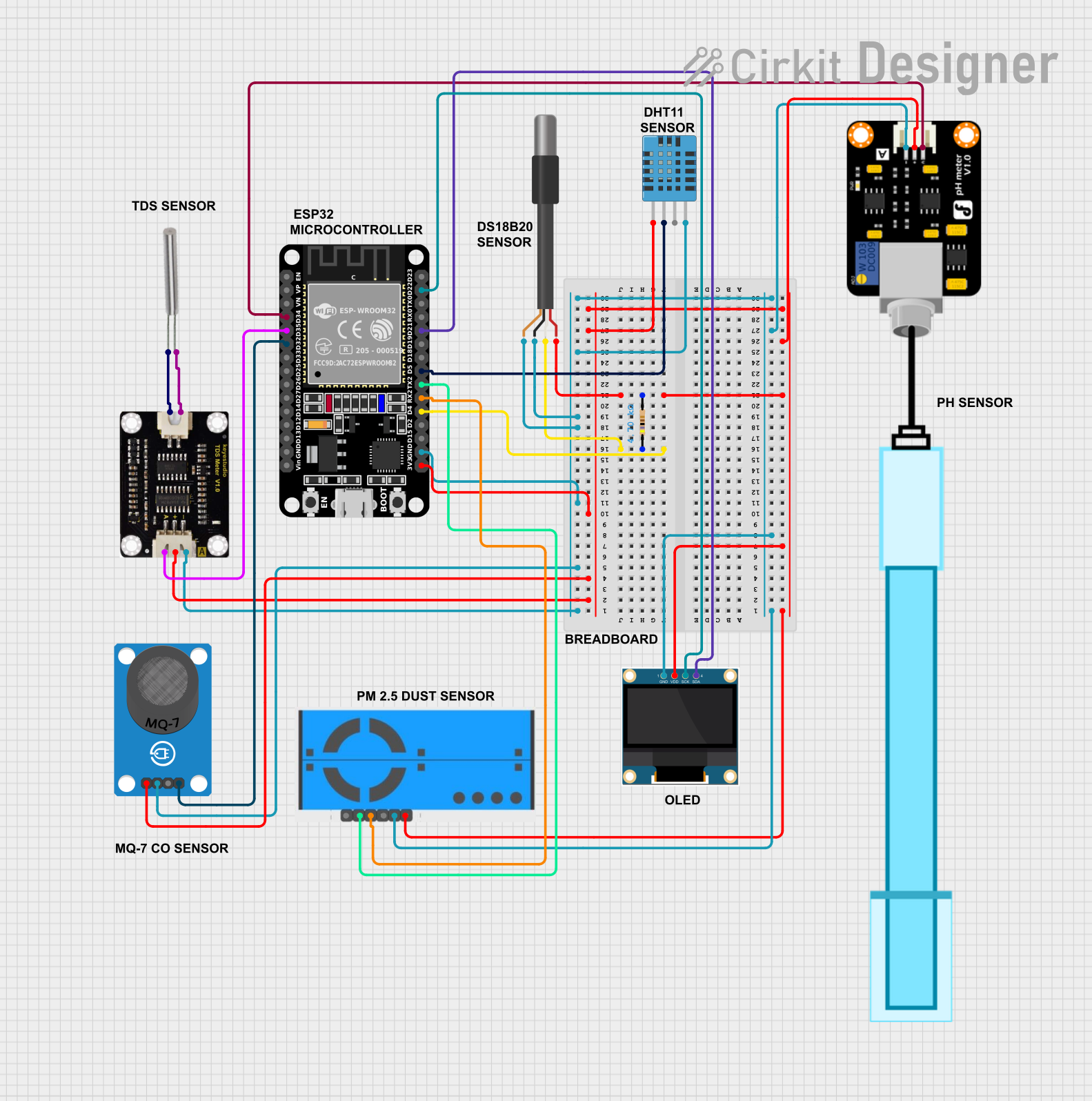
 Open Project in Cirkit Designer
Open Project in Cirkit Designer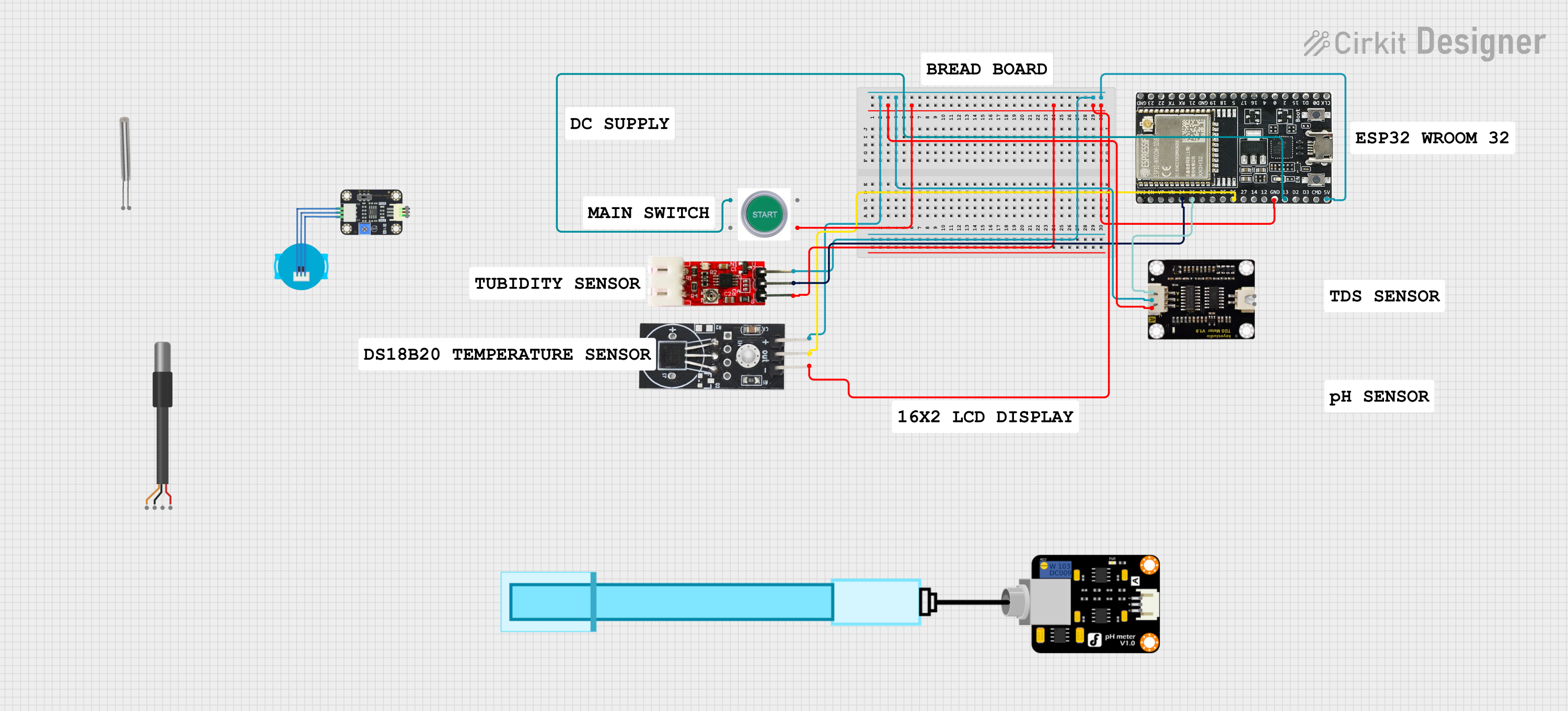
 Open Project in Cirkit Designer
Open Project in Cirkit Designer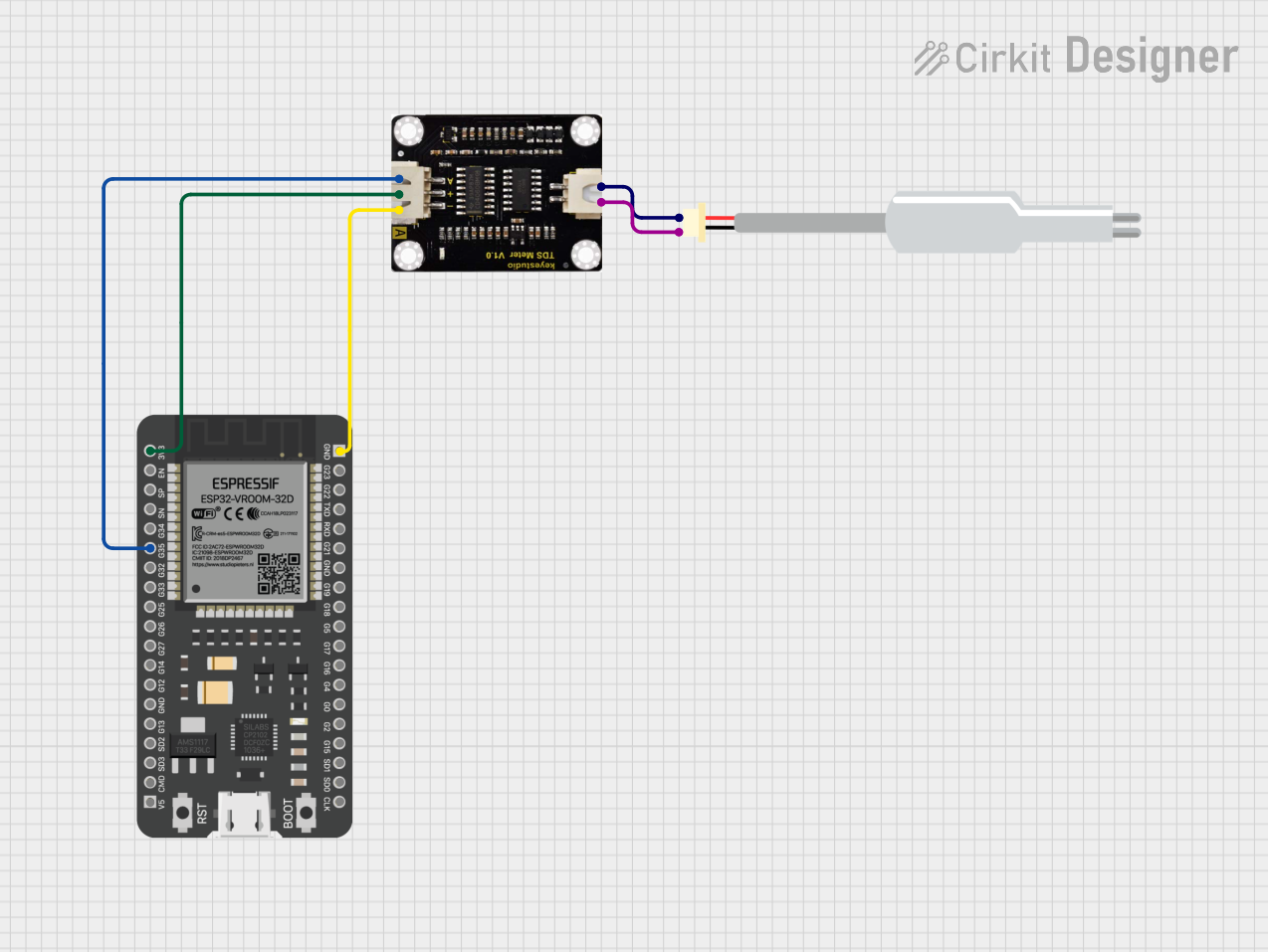
 Open Project in Cirkit Designer
Open Project in Cirkit Designer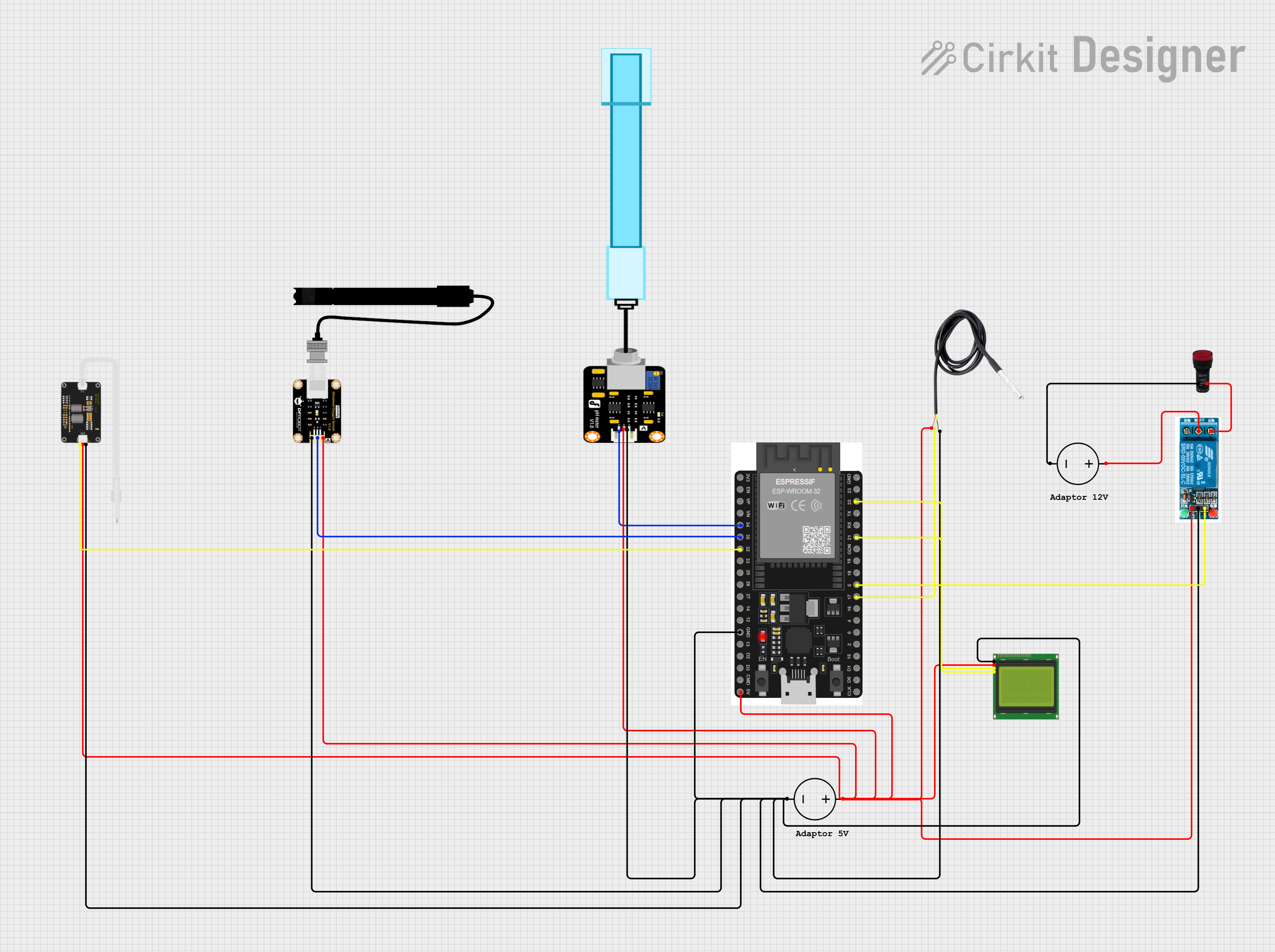
 Open Project in Cirkit Designer
Open Project in Cirkit DesignerExplore Projects Built with TDS Sensor Board

 Open Project in Cirkit Designer
Open Project in Cirkit Designer
 Open Project in Cirkit Designer
Open Project in Cirkit Designer
 Open Project in Cirkit Designer
Open Project in Cirkit Designer
 Open Project in Cirkit Designer
Open Project in Cirkit DesignerCommon Applications and Use Cases
- Water quality testing for drinking water
- Monitoring nutrient levels in hydroponics
- Assessing saltwater concentration in aquariums
- Environmental water testing in rivers, lakes, and oceans
- Industrial water analysis in wastewater treatment facilities
Technical Specifications
Key Technical Details
- Operating Voltage: 3.3V to 5.5V
- Output Voltage: 0V to 2.3V
- Measurement Range: 0 to 1000 ppm
- Accuracy: ±10% F.S. (Full Scale)
- Operating Temperature: 0°C to 50°C
Pin Configuration and Descriptions
| Pin Number | Pin Name | Description |
|---|---|---|
| 1 | VCC | Power supply (3.3V to 5.5V) |
| 2 | GND | Ground |
| 3 | AOUT | Analog output voltage |
| 4 | TEMP | Temperature sensor output (optional use) |
Usage Instructions
How to Use the Component in a Circuit
- Connect the VCC pin to a 3.3V or 5V power supply.
- Connect the GND pin to the ground of the power supply.
- Connect the AOUT pin to an analog input on your microcontroller (e.g., Arduino UNO).
- (Optional) Connect the TEMP pin to another analog input if temperature compensation is required.
Important Considerations and Best Practices
- Ensure that the sensor is properly calibrated before use.
- Avoid submerging the electronic components of the sensor board in water.
- Use a waterproof probe for the sensor when immersing it in the liquid.
- Keep the sensor clean and free from contaminants to maintain accuracy.
- Implement temperature compensation for more precise TDS measurements.
Example Code for Arduino UNO
// TDS Sensor Board example code for Arduino UNO
const int TDS_PIN = A0; // Analog input pin connected to TDS Sensor Board
void setup() {
Serial.begin(9600); // Start serial communication at 9600 baud rate
}
void loop() {
int tdsValue = analogRead(TDS_PIN); // Read the TDS value
float voltage = tdsValue * (5.0 / 1024.0); // Convert the analog reading to voltage
float tdsPPM = (voltage / 2.3) * 1000; // Convert voltage to TDS in ppm
Serial.print("TDS Value: ");
Serial.print(tdsPPM);
Serial.println(" ppm");
delay(1000); // Wait for a second before reading again
}
Troubleshooting and FAQs
Common Issues Users Might Face
- Inaccurate Readings: Ensure the sensor is calibrated correctly. If the readings are still off, check for any buildup on the sensor probe and clean it.
- No Output Voltage: Verify that the sensor is connected properly and that the power supply is within the specified voltage range.
- Temperature Fluctuations: If the TDS readings are affected by temperature, use the TEMP pin to measure the temperature and adjust the readings accordingly.
Solutions and Tips for Troubleshooting
- Calibration: Perform a two-point calibration using standard solutions with known TDS values.
- Cleaning: Use distilled water to clean the sensor probe gently. Avoid using any chemicals or abrasive materials.
- Temperature Compensation: Implement a temperature compensation algorithm in your code to adjust the TDS readings based on the temperature data from the TEMP pin.
FAQs
Q: Can the TDS Sensor Board be used in saltwater? A: Yes, but ensure that the measurement range of the sensor covers the expected TDS levels in saltwater.
Q: How often should the sensor be calibrated? A: Calibration frequency depends on usage, but it is generally recommended to calibrate the sensor every month or after any significant change in water quality.
Q: Is the sensor waterproof? A: The sensor probe is waterproof, but the electronic components on the board should not be submerged in water.
Q: Can the sensor measure the hardness of water? A: Indirectly, yes. TDS levels can give an indication of water hardness, but for precise measurements, a dedicated water hardness test is recommended.
For further assistance or technical support, please contact SQRobot customer service.